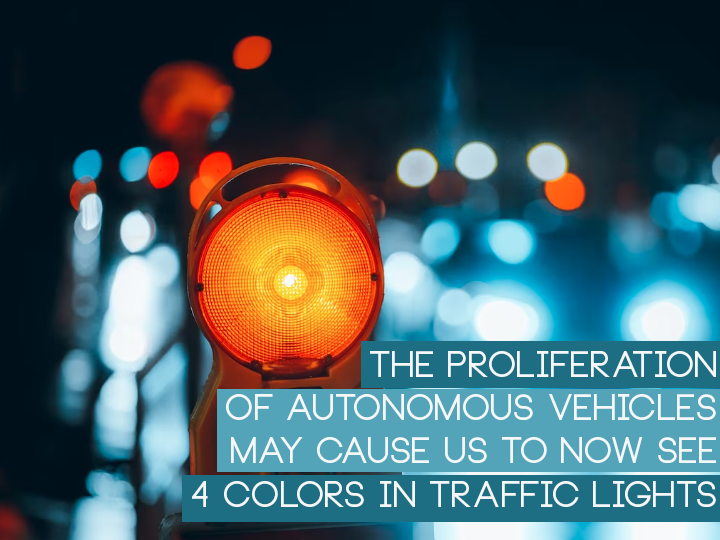
The proliferation of autonomous vehicles may cause us to now see 4 colors in traffic lights
An extraordinary suggestion for green, yellow and red traffic lights: Now we can add white as the fourth color...
With autonomous vehicles entering our roads, a strange new idea may soon emerge: a fourth traffic light color.
The new simulations suggest that a fourth light, which will be white, will help human drivers better understand what's going on on the road, while helping autonomous vehicles control traffic flow, saving time and fuel.
"The concept we propose for traffic intersections, which we call the 'white phase', leverages the computational power of autonomous vehicles (AVs)," said Ali Hajbabaie, co-author of the paper. It also includes a new traffic signal for traffic. Red lights will mean stop. Green lights will mean still late. White lights will just tell human drivers to follow the vehicle in front of them.”
In the future, autonomous vehicles will be able to communicate both with each other and with traffic systems, and will be able to precisely determine their position and next movement according to themselves. This is the basis of white light. If enough autonomous vehicles approach an intersection, they will coordinate the best traffic flow and the white light will tell us humans to follow only the vehicle in front. So the white light will actually turn on for us, not for autonomous vehicles.
If there aren't enough autonomous vehicles around, the old-fashioned red yellow green lights will continue to control traffic. The researchers also emphasize that it doesn't have to be a white light, it just needs to be a universally accepted recognizable color.
When tested on a small simulation using computer models, white light accelerated traffic by a small but significant amount when autonomous vehicles accounted for 10 to 30 percent of total vehicles. At 30 percent, delays were reduced by 10.7 percent, but traffic speed increased as the number of autonomous vehicles increased.
As self-driving vehicles can evaluate the best course of action compared to a simple timed stop-and-go system, it will significantly speed up traffic slowed by traffic lights, which anyone who has ever been stuck in a red light at a bad time will surely enjoy. But while simulations show that white light will be well adopted, real drivers may not like the added complexity of a ubiquitous system.
While the researchers acknowledge that a new system will be difficult to implement in the near future, they see an opportunity for pilot trials.